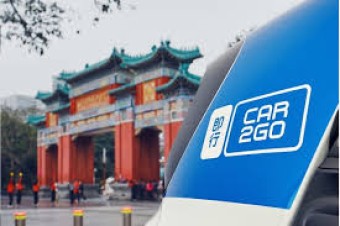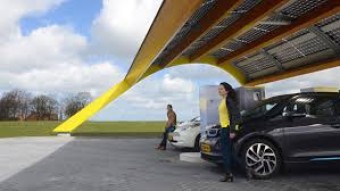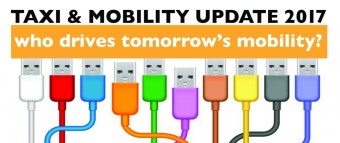Tokyo does not subsidise its transport system! Is that the secret to its success?
Should private vehicles always have to pay for the space they consume?
In an earlier article I discussed Tokyo’s remarkable return to housing affordability in recent decades. I speculated that a cultural tolerance to intensification could be a factor in Tokyo’s switch to affordable housing following the property boom of the 1980s.
Internationally, it is unusual for a city to change its long-term pattern of affordability. Generally the experience has been for unaffordable city to remain unaffordable -perhaps due to the difficulty in achieving a societal consensus and therefore the political will to implement significant housing reforms (this seems to be the case for New Zealand in the last thirty years).
Given that Tokyo is the exception which might prove the rule, it is worthwhile looking at what other urban economic aspects the city is exceptional in.
The first and most obvious one is its size, the metropolitan area of Tokyo-Yokohama is the world’s largest urban area containing 38 million people. Interestingly, despite Japan’s declining population, Tokyo itself is still growing. Tokyo at a systemic level must have efficient mechanisms to allow it to function and grow to such a large size.
Secondly, the issue which this article focuses on is how a network of transport arteries, veins and capillaries in Tokyo are allocated by competitive forces. There are two main elements to this – carparking is not subsidised and neither is public transport. It is possible that this creates a positive systemic effect where the competitive transport mechanisms combine with competitive urban housing intensification characteristics to make Tokyo a relatively affordable city. Which as I have said is amazing given Tokyo’s size.
The Economist recently wrote an article -Parkageddon -discussing that perhaps more powerfully than anything else, parking influences the way cities look, and how people travel around cities.
Many cities mandate that residential and commercial dwellings must provide a certain proportion of car parking places. These parking minimums can boost supply far beyond what the market demands. When London abolished minimum parking requirements in 2004, research showed that the amount of parking in new residential blocks promptly plunged, from an average of 1.1 spaces per flat to 0.6 spaces.
Usually car parking minimums are justified on the grounds that free car parking is a good thing. Unfortunately, when something is free there is a tendency to overuse it -like we would if water, electricity… was free. This is especially problematic as space in growing urban areas is an increasingly limited resource and of all the transport options -the private vehicle is the one that consumes the most space. The Economist explains that minimum car parking requirements are in fact a hidden subsidy for some and cost for others.
Free parking is not, of course, really free. The costs of building the car parks, as well as cleaning, lighting, repairing and securing them, are passed on to the people who use the buildings to which they are attached. Restaurant meals and cinema tickets are more pricey; flats are more expensive; office workers are presumably paid less. Everybody pays, whether or not they drive. And that has an unfortunate distributional effect, because young people drive a little less than the middle-aged and the poor drive less than the rich.
Another Economist article -Aparkalypse now -reported that research shows that parking adds 67% to the cost of building a shopping centre in Los Angeles and a study of Washington, DC, found that the availability of free parking is associated with a 97% chance somebody will drive to work alone.
Japan has not subsidised car parking in this way. In Tokyo car parking must respond to market forces. In Tokyo cars do not park on residential streets and all car owners must show a receipt for a private car park when they register their cars. There is no assumption that cars can freely park on the street -in fact it is a foreign concept. Car parking is the owner’s responsibility to make suitable arrangements. In Tokyo, how much, if any parking is provided by new residential or commercial premises is a commercial decision. The pricing of car parks varies, for instance, parking close to train station might be say $150 a month, versus a 10 minute walk further away, where the price might be less than $100. The price varying because of competition from commuters for space close to the train station.
In the future driverless cars will make car parking redundant as residents will order a driverless car to drop them off and pick them up -so drop-off zones are all that will be needed. This will necessitate congestion road pricing to prevent excessive congestion from large numbers of zero occupancy driverless cars circling urban areas 24/7 looking for passengers. Driverless car companies will want to acquire a network of private car parks to store their cars between rides to avoid these charges. The number of car parks and their locations will be commercial decisions based around factors such as, congestion charges and other operating costs, the cost of car parking, estimated search times etc.
In the future electric vehicles will also become more efficient and be more frequently used. Fuel tax revenue from conventional combustion engine vehicles will fall and new revenue sources will be needed to fund road maintenance. This could be another factor in moving to congestion road pricing. Given the size and flexibility of Tokyo it would not be surprising if the city was an early adopter of driverless cars, electric cars and road user charging systems.
Tokyo has the world’s most concentrated collection of competitive and profitable private commuter rail companies. Japan has always had a significant minority of private railways and in 1987 with the privatisation of Japan Railways a majority of the system is now in private hands. Today there are 16 major private railways in Japan, most of them competing against the Japan Railways Group which includes 6 passenger operating companies, separated by region. The most successful, profitable and competitive part of the private railway industry is centred around Tokyo. Tokyo demonstrates that in a healthy, growing city -private railways can be successful.
I believe it is not just that Tokyo is growing in population that makes private railways a success. It is because commuter rail’s chief rival -the private motor vehicle is not excessively subsidised, which allows trains to successfully compete. In particular, not subsidising car parking means that private vehicles in Tokyo never receive hidden subsidies like they frequently do in western cities. Is there a theory which links up competitive transport and urban land markets?
- Tokyo’s unsubsidized public transport system.









